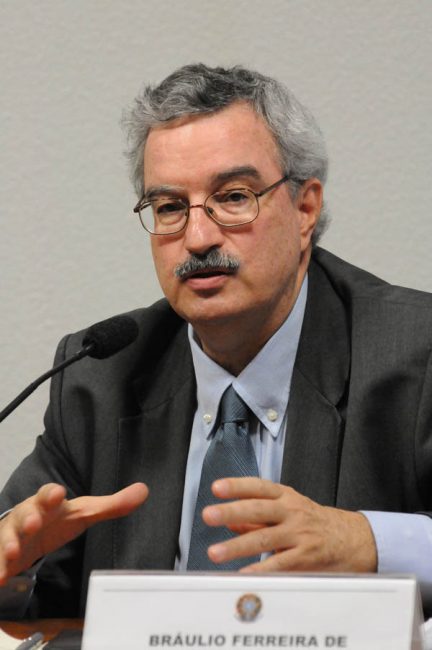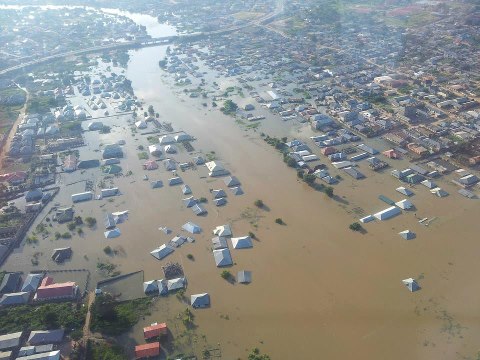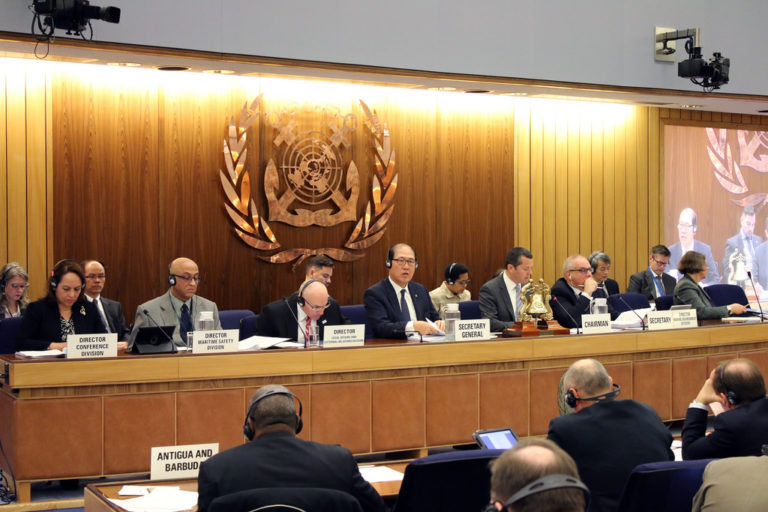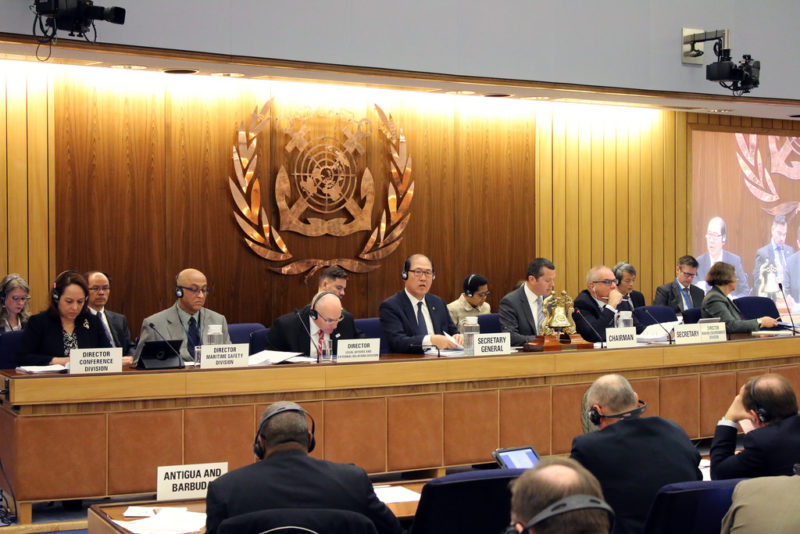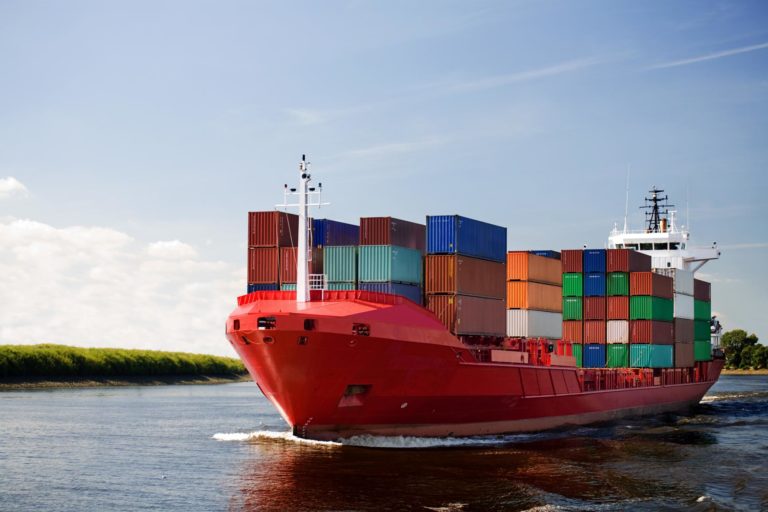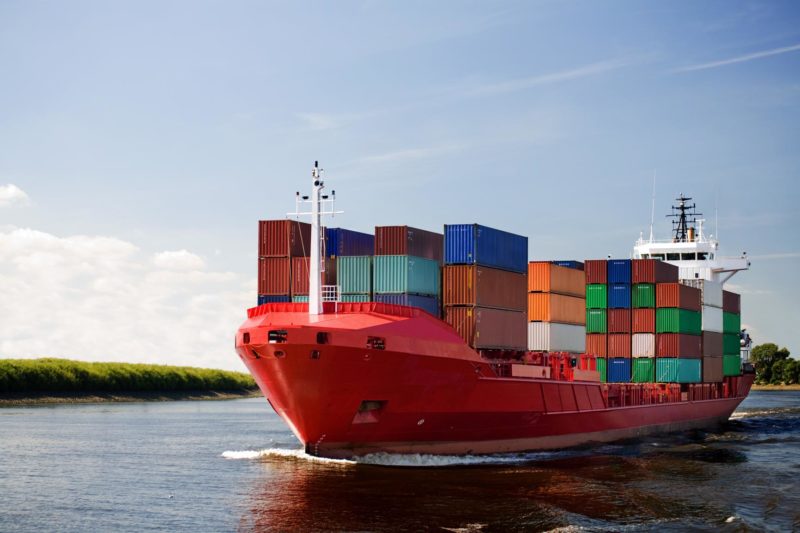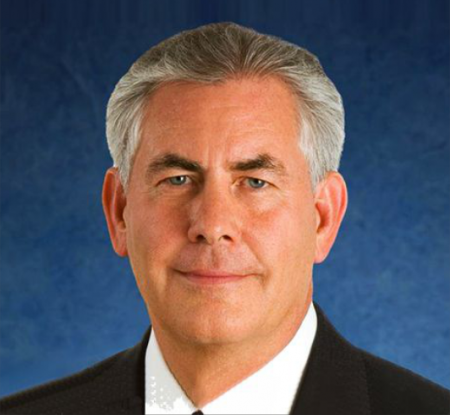The Nigerian healthcare delivery system is a source of concern to all and sundry because of the needless deaths of compatriots and the capital flight that the health sector has come to represent in our time.

While the wealthy routinely fly out of the country to seek medical expertise, the middle class struggle to access the few private healthcare centres in the country and the poor are left at the mercy of poorly managed healthcare centers manned by poorly committed, ill motivated healthcare workers of all types or quacks.
Overtime, Nigerians have depended on the Healthcare professionals to proffer solutions to the various challenges plaguing our healthcare delivery system but unfortunately, the health sector has become atomistic and is perpetually at war with itself and thus have almost abandoned their core mandate of attending to the healthcare needs our nation. Most often, rather than seek reengineering of the system, they are at war over personal emoluments.
I believe that the time is ripe for non-clinicians to help find alternative solutions as the consumers of the healthcare provider’s product – wellness. It is more so as this issue affects the general well-being of our citizens regardless of our status or other endowments
Most often, workers down tool in this sector for their own need and comfort, recourse to improving the system is only used as rhetoric to mask their original claims. It is therefore important that we put a call to government to look closely at our healthcare delivery system and address the issues squarely. The personal emoluments of the healthcare providers are crucial but improvement can only be obtained from a holistic review and implementation.
The Healthcare sector of our economy is meant to service the society and ensure that the populace, as much as possible, is in the state of health to effectively drive the engine of national development. What we find today is a healthcare system which rather than service the nation is preying on its citizens and pauperising our national economy either consciously or unconsciously.
The Current Health Architecture
Nigeria being a three tier state, constitutionally charges each tier with a specific level of responsibility in the health sector. The Local Authorities are responsible for the primary healthcare which ought to be the management of local dispensaries, environment sanitation/protection and routine immunisation, etc.
The State Governments are supposed to be responsible for secondary healthcare system i.e. the General Hospitals, Health Centres and similar healthcare delivery systems while the Federal Government is expected to concentrate its efforts on the tertiary and apex referral institutions such as the National Hospital, the Specialist/Teaching Hospitals and the interventionist Federal Medical Centres.
The reality on ground today however, is that the local authority delivery systems are non-existent. The dispensaries and Health Centers managed by the Native Authorities in the sixties and Local Authorities in the seventies are non-functional.
In other words, the first level of healthcare provision and prevention of diseases has been rendered non-existent. The implication of this is that all the patients that could have been attended to at this level either move to the next level (the secondary level) or seek self-medication or relies on quacks.
The Federal Government intervened to correct this anomaly by establishing the Primary Healthcare Development Agency (NPHCDA) to handle immunisation and other primary healthcare needs. This agency which is only an interventional Agency has stabilised itself thus giving cold comfort to Local Authorities to abdicate their constitutional responsibilities.
Recent newspaper reports indicate that only 2,500 of 30,000 Primary Healthcare Centres nationwide are functional. Thus diseases that could have been arrested or prevented at that level are left to fester sometimes metamorphosing into an epidemic on national dimensions.
Furthermore, the NPHCDA is funded by the Federal Government from its own share of the Federal Revenue Allocation. This unsustainable arrangement is what the country is currently operating and has even been further expanded to include support for some traditional birth attendants and midwives nationwide.
With the clamour for increased revenue allocation to the State Government, funding for this Agency may be one of the casualties of a reduction in the Federal Government spending whenever revenue review takes place. The implication of this on primary healthcare delivery is scary.
The State Governments are expected to be saddled with the efficient running of the Secondary healthcare facilities such as General Hospitals, health centres etc. Surprisingly due to gross dereliction of responsibility, many General Hospitals in the State are ill equipped, ill-staffed and ill maintained.
Sometime ago, a State in the middle belt of Nigeria shut down ALL its General Hospitals supposedly for renovation for almost three years. The whole state had to depend on the only Federal Medical Centre in the State Capital for its healthcare delivery – This necessitated the Federal Centre embarking on outreaches to the three Senatorial districts at huge costs to the Federal Government.
The hardship experienced by the citizens of that poor state is better imagined. Our political system does not sanction leaders for mismanagement of this nature and thus encourages maladministration underpinned by arrogance. There should be a way to sanction leaders at state levels who display this type of nonchalance to the welfare of their own people.
The Federal Government has largely borne the burden of servicing the healthcare delivery system of the country. From providing primary care and environmental sanitation in the Local Council Areas to servicing the Secondary level care of the State by building Federal Medical Centers in the States. The consequential effect of this is that Federal funds which should only have been spent on tertiary level care in the Federal and Teaching Hospital is dissipated and inadequate to procure and properly maintain the apex level clinical equipment in these tertiary level hospitals.
There is no doubt that given modern equipment, coupled with right maintenance, our hospitals at the Tertiary level possess the human capital and skills required to handle most referrals adequately. However, a situation where the first two levels of healthcare delivery system have collapsed and the third tier is left to handle the entire system results not only in overload and abuse of facilities; it is coupled with fatigue of the healthcare staff.
Working on a very high patient/health worker ratio is dangerous and not only lowers the efficiency of the professional but constitutes an emotional drain them on them resulting sometimes in rude encounters with patients.
Current Administrative Set-Up
The current system has the Chief Medical Director (CMD) or Medical Director (MD) who is usually a medical doctor as the Chief Executive of the hospital. The administration department is usually headed by a Director of Administration who is expected to be a professional in Hospital Administration/Management but most often they are graduates of the Social Sciences.
The doctors are organised under the Chairman Medical Advisory Committee (CMAC), the Nurses under the Head of Nursing and other professionals under their respective most senior officers. However, only the CMAC representing the doctors, HOD nursing for the nurses and the director of Administration are officially members of Top Management Chaired by the CMD.
This arrangement has encouraged the emergence of various unions to champion the course of other professional groupings in the hospital. The doctors who are usually head the hospitals, rather than take lead in harmonising the interest of every worker in the healthcare system as organisational leaders, responded by founding strong and powerful professional groupings which acts similar to unions to advance their own interest and only sometimes do they struggle to advance the course of the healthcare delivery system.
This development led to the loss of confidence by the other professionals in the ability of the doctors to protect their interest as leaders in the healthcare industry. This, in my understanding, is the major reason for the tumultuous relationship in the health sector which constantly erupts and paralyses healthcare delivery in Nigerian public institutions.
Several attempts by government to address the health sectors’ demands have serially failed because the human capital (manpower) in the sector are not prepared for a harmonious coexistence. Curiously, private hospitals hardly record strikes. It is therefore necessary to identify the root causes of strikes in the public sector health institutions.
Some Root Causes of Persistent Crisis in Health Sector
The perennial work stoppages in the health sector are caused by various issues which are of diverse nature. Some of them are connected while others are not.
A few of such are as follows: –
- Structure: the structure of management in the hospital is largely colonial (pre-independence) and has not evolved to take care of the increase in intellectual attainment by other specialties in the health sector. The doctor used to be administratively and intellectually superior to all other actors in the health sector but not anymore. With the increase in opportunities for higher education and research, some hitherto subordinate health sector professional groupings have advanced intellectually and do not feel intellectually subordinate to doctor schoolmates anymore. The issue to be addressed however is if that superior knowledge is necessary for the performance of their roles in the hospital setting.
- Capacity: Management and administrative ability is acquired through a deliberate system of teaching, learning and experience occasioned by a course of learning. The training of doctors makes light of general management in its curriculum content but yet they graduate to head the hospital system, a top management position. Every hospital is similar to a small multidisciplinary company with various inputs processed by different experts and applied to the patients with the expected output of providing healthcare to the patients. Most often this deficiency of doctors in management, especially crisis management and labour relations are the root causes of some strikes in our hospitals.
- Unionism: There are so many unions in the health sector. Most of them antagonistic to each other. Some are not registered unions but professional associations yet the system tolerates their existence without legal backing to the detriment of orderly conduct in the hospitals. Due to this antagonism, each group seeks to protect its turf and advance only its interest, at such, delivery of healthcare to the patient has been the constant casualty. If our healthcare professionals will co-operate with one another and focus on the patient, the little resources available to the sector will achieve much more than we are currently experiencing.
- Education system: Some of the crises we experience in the sector are engineered by the type of training these professionals obtain from their institutions. Rivalry of the profession need to be addressed by definite curriculum arrangement that promotes the unity of the various specialties and their interdependency in favour of the patient in the hospital.
- Corruption: Largely, control of resources and loose accountability for resources in the hospital is one of the causes of crisis. A patient is desperate to get well and will not be bothered about what happens to the payment made at that point. Poor accountability and the control of loose monies flowing around various units of the hospital is always a cause of friction.
- Inadequate Supervision: Due to the multiplicity of unions and associations, supervision is hampered. Ordinary disciplinary issues are misinterpreted as victimisation. Command and control suffers due to inability to enforce rules and regulations by superiors.
- Incompetence: When appointment to management/administrative positions are made based on entry level qualifications and specialty, regardless of experience and further trainings, the best may not be favored. While entry qualification and specialty are basic, it must be appreciated that further training and experience are required in order to function effectively in a top management position.
- Lack of Commitment: The medical professional from history is highly honoured. People who give care to and manage human life are not only expected to be intelligent, but highly compassionate. The educational pathway and training is rigorous. Somehow, in our country, the management of this sector has resulted in these usually focused set of professionals being distracted by the allure of lucre to deviate from the established norms to the detriment of their professional calling and sometimes their oath. Sometimes, this is due to the pressures visited upon them by an uncaring system. Perhaps, there is a need to filter the type of entrants into the medical field and also put in place a robust compensation system henceforth. Healthcare professionals should not be constantly struggling to be compensated in a society that has values and appreciates their contributions.
- Inadequate Tools for Measuring Output: Most government hospitals have no tools for measuring the work output of their staff. A lot of latitude is given to individual staff to work as expected, but this is largely abused. Thus we have a lot of divided loyalty and double dealing.
- Lack of patriotism: A survey of the persistent crisis in the healthcare sector indicate that quite a high number of them could be resolved through negotiations without the attendant loss of time and inconveniences suffered during total hospital shut downs. The easy recourse to strikes does not portray a patriotic commitment on the part of the unions while the government officials must only make commitments which they are sure that the government can meet in a timely manner.
- Lack of Incentive for Hard work: The system of administration of a public hospital is based on civil service rules and regulations. Considering the delicate nature of performance and commitment required in healthcare, the lack of incentive for hard work is a disincentive. All negotiated emoluments are of general application and thus there is no incentive for hard work.
- Lack of Sanctions for Poor Unprofessional Conduct: Sanctions for unprofessional conduct or misconduct is farfetched and often times are a slap on the wrist. Most often, the culprit is let off after the hue and cry has subsided.
- Favoritism and group Interest Overriding Professionalism and national Interest: Most unions in the health sectors are concerned only about the welfare of their members regardless of the healthcare team or even the patient. Most activists are always those who have challenge in exhibiting proficiency in their calling, thus the diligent and hardworking professionals are blackmailed into silence or even exiting the service.
- Predatory Business Class: The business class that services the health sector do not project the interest of the patient but rather are concerned most often about the maximisation of profit only. This results in equipment being dumped on the hospital without serviceability and sustainability arrangements. Sometimes, some equipment is brought into the country without going through the manufacturers authorised channels and is thus stripped of the warrantees necessary for routine upgrades. Although a national Standard and approved equipment policy for public hospitals exists, lack of periodic reviews in the light of emerging technology has made the policy obsolete and is enforced more in the breach. Hospitals procure all manner of equipment from various sources regardless of their in-house capacity to maintain them. Thus, these hospitals are littered with broken down unserviceable equipment which are sometimes the cause of unrest by the workers.
- Lack of policy on the interdependency of the Healthcare Sector and the Healthcare Sector products manufacturers: The Healthcare sector is unmindful of the relation between the care providers and manufacturers of their inputs for care giving. When hospitals shutdown, it is not only the patients that suffer, the drug and medicament suppliers/manufactures are also affected and consequently the economy loses both in manpower availability and the contribution of the health sector to the GDP.
- No enforcement of local content policy in drug administration: Enforcement of local content will limit corruption in drug procurement and challenge indigenous manufacturers. Importation should be for only products which in-country manufacturing capacity does not exist.
- Inadequate appreciation of the nexus between the nation’s healthcare system, unemployment and GDP: The healthcare worker sees the hospital patient as an end in itself. They are most times oblivious to the fact that in a society, we are all interdependent and mismanagement of any area affects the entire system. Long delays in accessing healthcare and getting well denies the economy of the inputs of the patient in the national economy.
- Lack of a clear definition of the powers and roles of the Federal Ministers, State Commissioners, Local Government Supervisor/Councilors in the healthcare system. The new national health act used to be operationalised in order for benefits in this area to be assessed.
- Overdependence on the states and local governments on the federal Government for the provision of healthcare services. Federal government should surcharge these tiers for interventions carried out on their behalf.
- Lack of a Co-Ordinated Healthcare Architecture for the Country: All the three arms are supposedly building healthcare facilities most often duplicating same facilities in an uncoordinated manner. The triangular approach to healthcare provision will be more functional coordinated nationally.
- Lack of Attention to Biomedical Engineering: – The healthcare sector is largely dependent on human capital and efficient equipment for the provision of services. However, the training of manpower to ensure sustainability and the maintenance management of hospital equipment is not given adequate attention. While huge sums are expended on the procurement of technologically advanced new medical equipment, the in-house hospital manpower that should ensure the sustainability of such acquired Hi-tech equipment are not trained and are ill-equipped for their roles thus limiting the economic lifespan of such expensive equipment.
- Lack of Project Management Expertise in the Hospitals: – Most public health institutions routinely embark on projects to expand, renovate or re-equip. The successful prosecution of these projects require project management competency. However, due to the specialised nature of training of the healthcare professionals, they are deficient in this area. Some of the abandoned projects in the hospitals are traceable to their deficiency in project management.
It is not possible to catalogue all the reasons for work stoppages in our public health sector; however, these few are instructive in seeking solutions to the downward trend in our healthcare delivery system.
If the exodus of our compatriots for medical care to India, Egypt, South Africa, UK, USA, Germany etc. with the attendant loss of forex is to be stemmed a major restructuring of the nation’s healthcare Architecture must take place (In fact, the current economic situation in our country has made the review of our healthcare delivery system more imperative as the cost of seeking alternatives outside the shores of this country is now prohibitive even for the rich!).
Ordinarily medical tourism ought to be the pre-requisite of the affluent but contemporary experience has shown that neglecting to seek medical attention outside the shores of this country could mean pronouncing a death sentence on yourself.
Under the current economic climate, the government has no choice than to revamp the health system while tackling the economy and infrastructural challenges. Some of these changes do not require funds but a revision of strategy.
- Nigeria healthcare professionals are among the best in the world and would deliver given the right atmosphere. The right atmosphere should among others include a review of the organogram of the healthcare institutions, adjustment of the management pattern of the hospital and expansion of the clinical training program of doctors to include salient management concepts and equipping for managing a multidisciplinary enterprise such as a hospital.
- The policy that allows for medical personnel in public services to run parallel hospitals whilst still in public service needs a rethink. This policy has done more harm than good to the healthcare delivery system in this country. The initiators probably meant well and needed to address certain nagging issues at the time it was granted. The implementation has been abused and the ordinary citizen are helpless as diversion of patients, absenteeism and extortion has taken over this policy no matter how well intentioned it was at conception.
- There is an urgent need to review and allocate specific responsibility in patient management as it concerns the Consultant, Doctors, Residents, NYSC Doctors, Nurses and Midwives. The manpower input of these professional ought to be thoroughly monitored in order for it to achieve the desired objective. Whereas the payrolls of the hospitals are loaded with these experts, the actual delivery of services leaves much to be desired.
- Drugs availability is an age old challenge in the system. With the number of pharmaceutical manufacturers in Nigeria and the NHIS support, there is no reason why baseline medication should not be available at affordable prices for the populace throughout the country.
- The pharmaceutical drug distribution system both in the public and private sector needs to be re-organised by the government and made efficient. Government should take the lead in this direction.
- Drugs and medicaments donated by multinational agencies need to be monitored and directed to the areas of need when they still have adequate shelve life. The role of Government Agencies in the Ports on donated drugs leaves a lot to be desired. The Government Agencies at the nations Ports should co-operate with the health authorities to ensure that donated and even imported medical equipment and drugs do not waste away at the ports when those in need of their applications are dying in droves.
The following areas require urgent attention:
- Government should define the structure of the nation’s healthcare Architecture possibly through a constitutional amendment. Healthcare responsibilities should be clearly defined between the three tiers of government. And each tier should be encouraged to perform its role. When support is lent by other tiers, it must be as an intervention and temporary. Each tier should be encouraged to play their constitutional roles
- The National Health Insurance Scheme should be expanded and made to function as a health insurance body for the entire populace. The experience gathered since inception is now enough for them to deploy nationally.
- Government should decentralise control of healthcare facilities. The federal ministry of health should be concerned with enforcement of regulatory control and providing enabling environment for investment in the Health Sector.
- Healthcare procurement is specialist procurement. Government hospital must not procure medical equipment without adequate sustainability arrangement. In this wise, biomedical engineers and technicians should be employed and deployed to the hospital to arrest the constant breakdown of equipment.
- Some equipment must not be owned by the hospitals or government at all. Such equipment of high capital value should be obtained on a public, private partnership (PPP) arrangement with the manufacturers. Nigerian patient population is huge enough to generate a fast and good return on investment. Government resources should only be spent to ensure that the vulnerable are not left out due to financial incapacity.
- Local entrepreneurs should be encouraged to produce local medical equipment beginning with basic ones which might not require high technology. We can adapt and manufacture some of the medical equipment being imported now at fractions of the current cost.
- The training curriculum of healthcare professionals should be reviewed to equip them with a good knowledge of their interdependency and co-existence in the hospital setting.
- Every hospital should define its manning levels and the requisite qualification to function at the various levels in the hospital organogram. Over qualified personnel should be encouraged to seek professional expression elsewhere. The universities and research institutions are available to accommodate such brilliant minds. They must not remain in the hospitals where they are underutilised and redundant
Finally, the health sector is definitely not the only one needing a thorough analysis and re-organisation but it is the most potent in terms of its adverse survival index on the populace. If we must survive and exit this recession, the working class must be healthy enough to be productive and grow the economy.
I do hope that those who are in the position to act will consider all or part of this discussion as a contribution to our quest for national transformation.
All hands must be on deck if we must navigate and turn around the economy of our country for good.
Long live Nigeria! Long live the healthcare sector!
By Samson A. Opaluwah (Former Director in the Federal Ministry of Health and, The National Hospital, Abuja)

